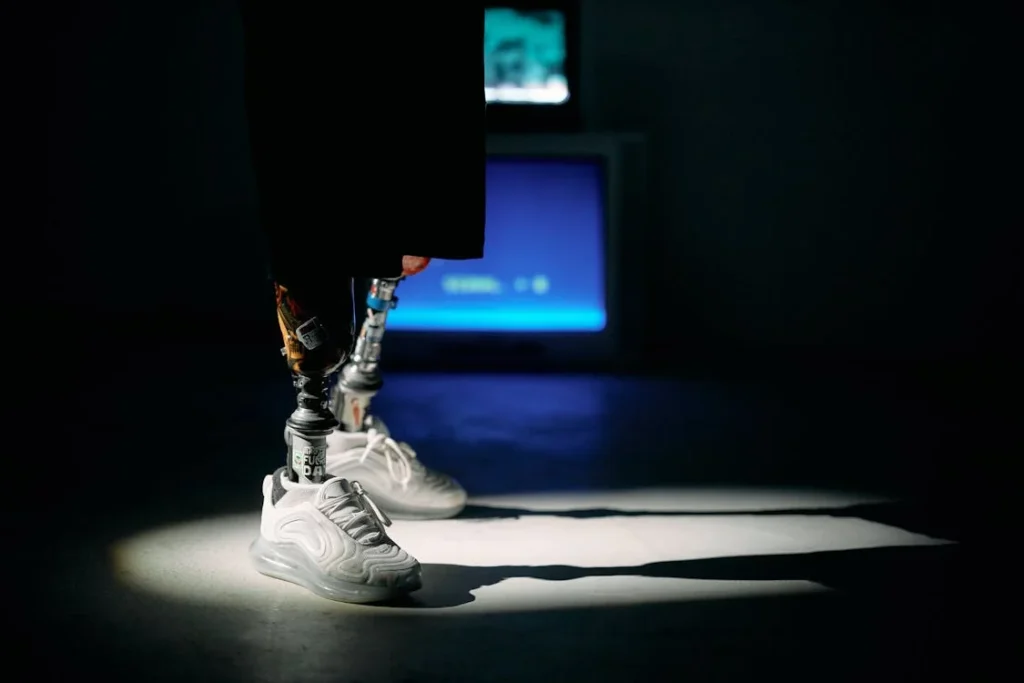Living with limb loss can be challenging, but modern prosthetic technology offers life-changing solutions. Whether you have lost a part of your foot or your entire leg up to the pelvis, the right prosthetic can restore mobility, independence, and confidence.
Partial foot and hemipelvectomy prosthetics are designed for different levels of limb loss, but both require careful selection, customization, and rehabilitation. Choosing the right prosthesis is not just about getting a replacement—it’s about finding a solution that fits your lifestyle, provides comfort, and helps you move naturally.
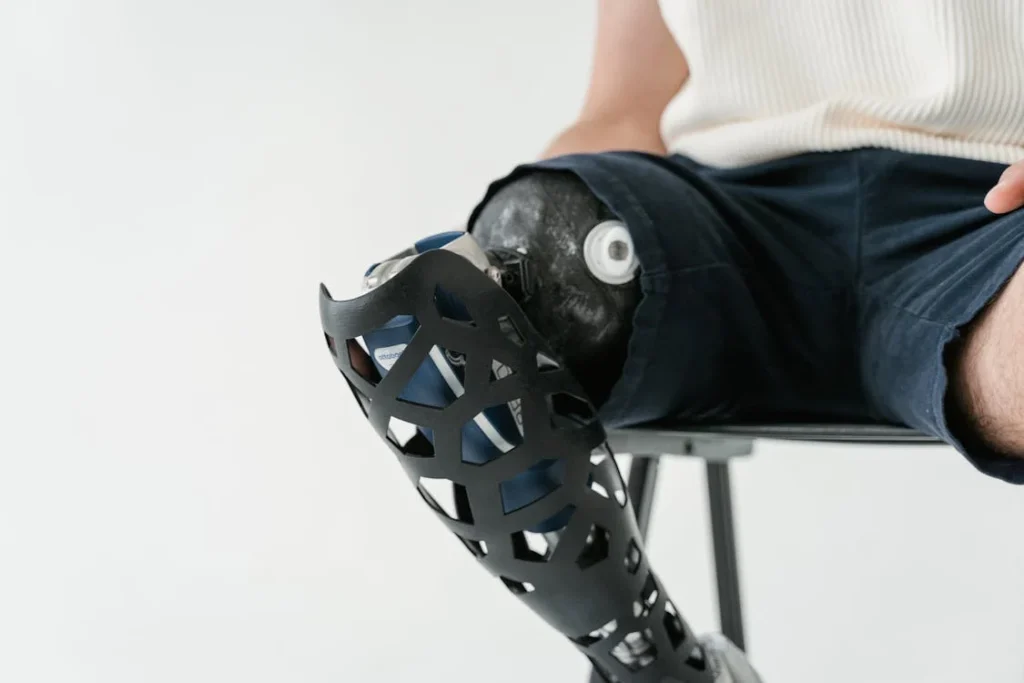
Understanding Partial Foot and Hemipelvectomy Prosthetics
Prosthetics for partial foot and hemipelvectomy amputations serve different purposes based on the level of limb loss.
While both help restore function and mobility, they are designed differently to address the unique challenges of each condition.
What is a Partial Foot Prosthesis?
A partial foot prosthesis is used when only a part of the foot is missing. This can include toes, the front part of the foot, or even up to the midfoot.
The main goal of this type of prosthetic is to restore balance, improve walking ability, and prevent complications like uneven weight distribution, which can cause pain in other parts of the body.
These prosthetics are designed to fit comfortably inside a shoe, providing support and helping the user walk more naturally.
Depending on the level of amputation, a partial foot prosthesis can be a simple insert or a more structured device that extends up to the ankle for extra support.
Many people believe that losing just a part of the foot won’t affect mobility much, but even small changes in foot structure can lead to major challenges.
Without proper support, walking can become painful, and over time, the body may compensate in ways that cause discomfort in the knees, hips, or back.
Challenges with Partial Foot Prosthetics
One of the biggest challenges with partial foot prosthetics is achieving a natural walking motion.
The foot plays a crucial role in pushing off the ground, maintaining balance, and absorbing shock with every step. When a part of the foot is missing, these functions are affected.
Another challenge is keeping the prosthetic secure. Since the remaining foot still has sensation and movement, a poorly fitted prosthesis can slip or cause pressure sores.
This is why custom fitting is crucial. A well-made prosthetic will not only restore function but also protect the remaining part of the foot from injuries.
What is a Hemipelvectomy Prosthesis?
A hemipelvectomy prosthesis is designed for individuals who have lost their entire leg, including part of the pelvis.
This is one of the most complex prosthetic solutions because it must replace not only the leg but also provide stability where the hip joint used to be.
Unlike a partial foot prosthesis, which fits inside a shoe, a hemipelvectomy prosthesis is a complete external system that includes a custom-made socket, a mechanical or computerized knee joint, and a prosthetic foot.
It must provide enough support to allow the user to sit, stand, and walk comfortably.
A hemipelvectomy amputation is rare, often resulting from severe trauma, tumors, or infections.
The loss of an entire leg and part of the pelvis significantly changes how the body moves, making rehabilitation and training an essential part of adapting to a prosthetic.
Unique Challenges of Hemipelvectomy Prosthetics
Because there is no natural hip joint to support movement, walking with a hemipelvectomy prosthesis requires learning new ways to control balance and motion.
The prosthetic must be carefully designed to distribute weight evenly and provide stability during movement.
Since these prosthetics involve multiple components, getting the right fit and alignment is critical.
A poorly fitted prosthetic can cause discomfort, skin irritation, and even long-term issues like joint pain or posture problems.
Another challenge is energy consumption. Walking with a hemipelvectomy prosthesis takes more effort than walking with a natural leg.
However, advancements in prosthetic technology have led to lighter materials and improved designs that make movement more efficient.
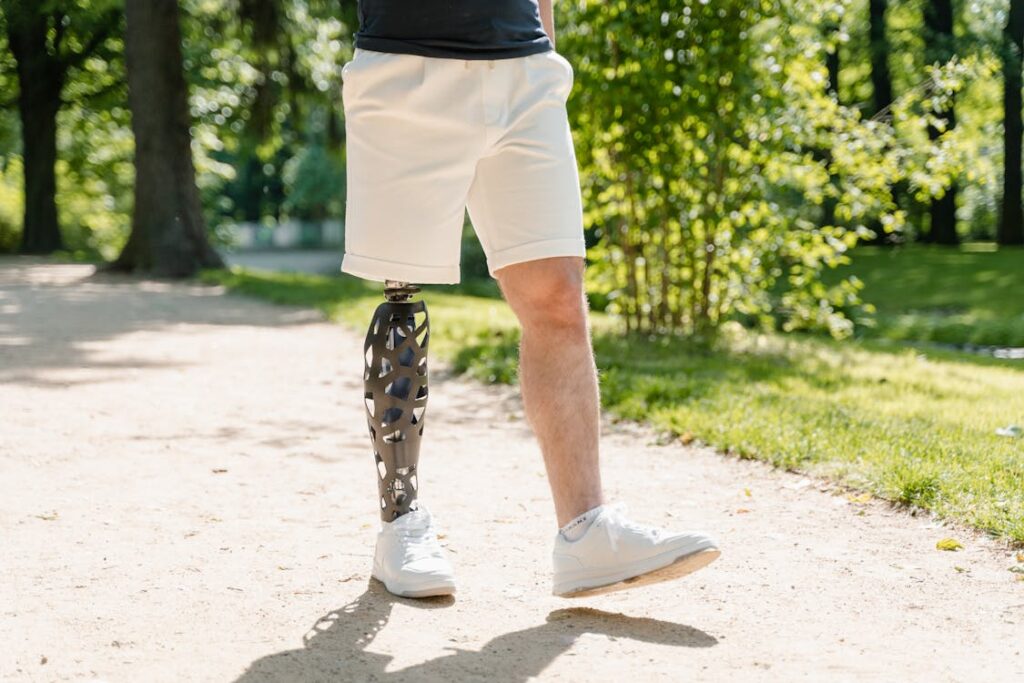
Choosing the Right Prosthetic for Your Needs
Finding the right prosthetic is not just about replacing what is lost—it’s about restoring function, comfort, and confidence.
Whether you need a partial foot prosthesis or a hemipelvectomy prosthesis, the selection process should be based on your lifestyle, daily activities, and long-term goals.
Factors to Consider for Partial Foot Prosthetics
A partial foot prosthesis must provide both comfort and stability while allowing you to walk as naturally as possible. Choosing the right one involves several key factors:
Level of Amputation
The type of prosthetic will depend on how much of the foot is missing. A toe amputation may only require a small insert, while a midfoot amputation might need a device that extends up the ankle for better support.
Footwear Compatibility
Most partial foot prostheses are designed to fit inside a shoe, but not all shoes work well with them.
It’s important to choose footwear that provides enough space, support, and grip to keep the prosthetic secure. Some individuals may need custom-made shoes to ensure a proper fit.
Material and Comfort
A prosthetic that is too hard can cause discomfort, while one that is too soft may not provide enough support. Modern prosthetics use lightweight materials like carbon fiber or silicone to offer a balance of flexibility and durability.
The inner surface should be soft enough to prevent irritation, while the outer structure should be firm enough to provide stability.
Skin Protection
Since the remaining part of the foot still has sensation, pressure points and friction can cause sores or blisters. A well-fitted prosthetic will distribute weight evenly and reduce the risk of skin problems.
It’s also important to check your skin regularly and ensure the prosthetic is not causing any discomfort.
Factors to Consider for Hemipelvectomy Prosthetics
A hemipelvectomy prosthesis is much more complex than a partial foot prosthetic, as it replaces an entire leg and part of the pelvis. The right choice will depend on several key aspects:
Prosthetic Design and Components
A hemipelvectomy prosthetic typically includes a custom-made socket, a mechanical or computerized knee joint, and a prosthetic foot.
Some advanced models include microprocessor-controlled knees that adjust to different walking speeds and terrains, making movement more natural and efficient.
Weight and Energy Efficiency
Since walking with a hemipelvectomy prosthetic requires more effort than walking with a natural leg, the weight of the prosthesis is a crucial factor.
Lighter materials like titanium and carbon fiber help reduce strain and make movement easier.
Suspension System
A hemipelvectomy prosthesis must stay securely in place without causing discomfort. Different suspension systems, including vacuum-assisted suction and straps, are available to ensure a snug fit.
A secure fit prevents movement inside the socket, which can cause skin irritation and discomfort.
Rehabilitation and Adaptation
Getting used to a hemipelvectomy prosthetic takes time and practice. Physical therapy is essential to help users learn how to balance, walk, and move efficiently.
Gamified home-based rehabilitation programs, like those offered by Robobionics, can make this process smoother and more engaging, helping users adapt more quickly.
Customization and Fit Matter
No two people are the same, which is why prosthetics must be customized for each individual.
A prosthetic that fits well will not only be more comfortable but also improve mobility and reduce strain on the rest of the body.
Robobionics provides personalized prosthetic solutions that take into account the user’s unique needs.
From precise fittings to advanced prosthetic designs, we ensure that every prosthetic supports natural movement and enhances the quality of life.
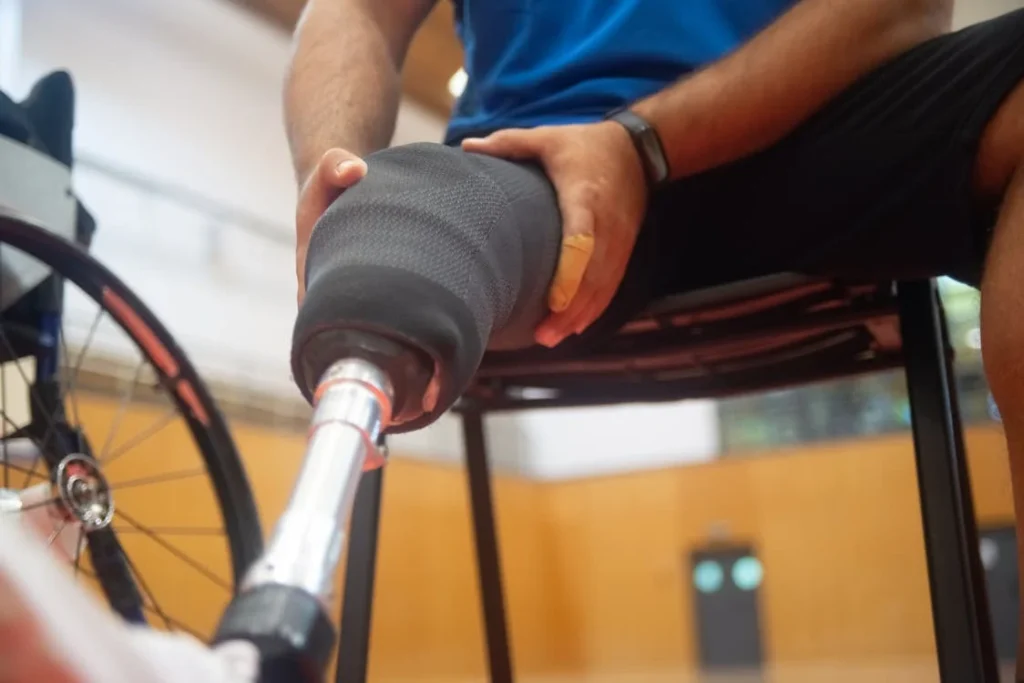
The Fitting and Rehabilitation Process
Getting a prosthetic is not just about receiving a device; it is a journey that involves careful fitting, adjustments, and rehabilitation.
Both partial foot and hemipelvectomy prosthetics require a structured approach to ensure they function properly and comfortably.
The Importance of a Proper Fit
A well-fitted prosthetic makes all the difference in mobility and comfort. If a prosthesis is too loose, it can slip, cause instability, and lead to sores or blisters.
If it is too tight, it can restrict movement and cause discomfort.
The fitting process begins with an assessment by a prosthetist, who will take detailed measurements and evaluate factors like residual limb shape, skin sensitivity, and muscle strength.
For partial foot prosthetics, this ensures the device aligns well with the remaining foot structure. For hemipelvectomy prosthetics, it determines how weight will be distributed across the socket for balance and stability.
Modern prosthetics use 3D scanning and computer-aided design to create highly precise fits.
Advanced materials help create prosthetics that feel natural while maintaining durability.
Trial and Adjustments
Once the prosthetic is designed, a trial period follows. During this phase, users wear the device and provide feedback on comfort, fit, and ease of movement. Adjustments may be needed to refine the fit and ensure proper weight distribution.
For partial foot prosthetics, this might involve modifying the insole or adjusting the shape of the prosthetic for better alignment.
For hemipelvectomy prosthetics, adjustments may include fine-tuning the knee joint, socket fit, or suspension system.
Learning to Walk Again
Whether adapting to a partial foot or hemipelvectomy prosthesis, walking feels different at first. The body must adjust to a new way of moving, redistributing weight, and maintaining balance.
For partial foot prosthetics, users often need to focus on improving balance and learning how to use their remaining foot effectively. Some may need to adjust their walking pattern to ensure even weight distribution and avoid straining the knee or hip.
For hemipelvectomy prosthetics, the process is more complex. Since the hip joint is missing, walking requires learning how to use the prosthesis to generate motion.
Many users begin with parallel bars for support, gradually transitioning to walking with a cane or independently. Physical therapy plays a crucial role in strengthening muscles and improving coordination.
The Role of Rehabilitation
Rehabilitation is essential for long-term success with any prosthetic. It helps users regain strength, flexibility, and confidence in movement. A structured rehabilitation program typically includes:
- Balance Training to help the body adjust to the new prosthetic and prevent falls.
- Strength Exercises to build muscle endurance, particularly in the core and lower body.
- Gait Training to develop a smooth, natural walking pattern and avoid strain on other joints.
- Daily Activity Practice to ensure users can navigate real-world environments, including stairs, uneven terrain, and long distances.
Robobionics offers gamified home-based rehabilitation programs that make this process engaging and effective. These programs use interactive exercises to encourage users to practice movements in a fun and motivating way.
Long-Term Adaptation and Care
Even after initial rehabilitation, ongoing care is important. Prosthetics may need periodic adjustments due to changes in body weight, residual limb shape, or activity level.
Regular check-ups with a prosthetist help ensure the device remains comfortable and functional.
Proper skin care is also vital, especially for individuals using hemipelvectomy prosthetics, where the socket covers a large surface area. Checking for irritation, maintaining hygiene, and using protective liners can help prevent discomfort.
Living with a prosthetic is a journey of adaptation, but with the right support, users can regain independence and lead active lives. Robobionics is committed to providing advanced prosthetic solutions and ongoing support to ensure the best possible outcomes for every user.
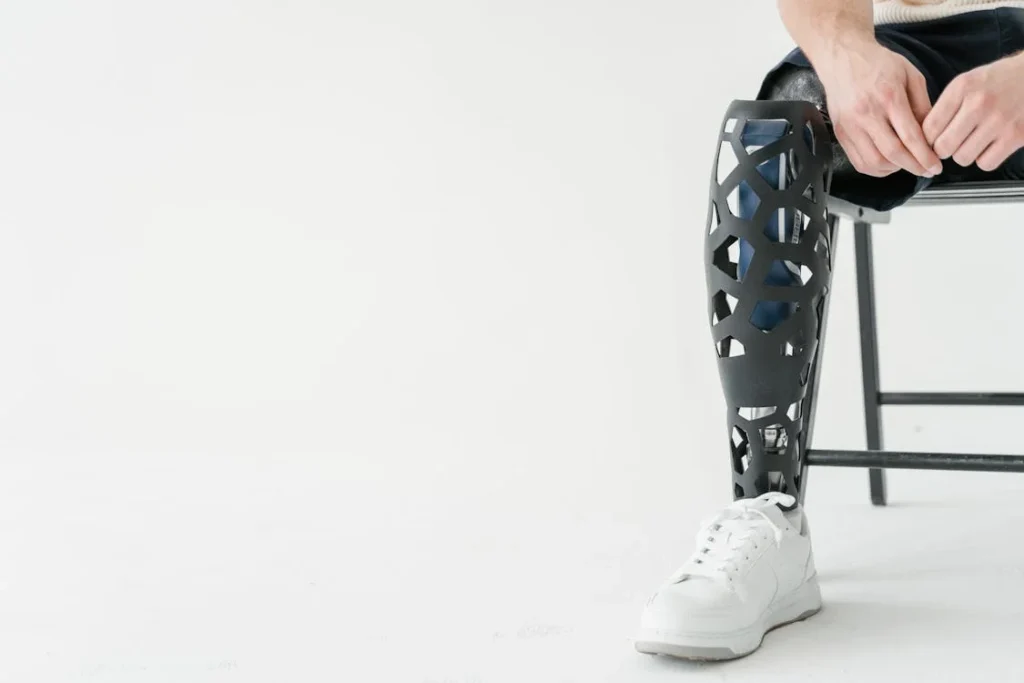
Overcoming Everyday Challenges with Prosthetics
Adapting to life with a partial foot or hemipelvectomy prosthesis comes with unique challenges.
From navigating different surfaces to managing daily activities, every user faces a learning curve. However, with the right approach, these challenges can be overcome, allowing for a more comfortable and active lifestyle.
Walking on Different Terrains
One of the first adjustments after getting a prosthetic is learning to walk on various surfaces. Flat indoor floors are the easiest to navigate, but outdoor environments can be unpredictable.
For partial foot prosthetic users, walking on uneven ground like grass or gravel requires extra attention to balance. Since the foot’s natural push-off motion is affected, wearing proper footwear with a strong grip can help.
Some prosthetics come with energy-returning features that assist with propulsion, making walking smoother.
For hemipelvectomy prosthetic users, terrains like stairs, slopes, or soft ground require different movement techniques. Many users find that taking smaller steps and focusing on weight distribution helps prevent falls.
Practicing on different surfaces with the help of a physical therapist can build confidence and improve mobility.
Maintaining Comfort Throughout the Day
Wearing a prosthetic for long hours can sometimes lead to discomfort, especially if the fit is not perfect. Heat, friction, and pressure points can cause irritation, so it is important to monitor the skin regularly.
For partial foot prosthetics, ensuring proper sock thickness and choosing breathable materials can help prevent sweating and blisters. Some users may benefit from wearing gel liners that provide extra cushioning.
For hemipelvectomy prosthetic users, socket discomfort can occur after extended use. Adjusting the prosthetic periodically, using specialized padding, and taking short breaks throughout the day can help relieve pressure.
Regular check-ins with a prosthetist can ensure that the socket fit remains comfortable.
Returning to an Active Lifestyle
Many people worry that using a prosthetic will limit their ability to stay active. However, with the right adjustments, it is possible to return to hobbies, exercise, and even sports.
For those with partial foot prosthetics, activities like walking, cycling, and swimming are usually manageable with minor adaptations. Some prosthetic designs offer extra flexibility, making it easier to engage in physical activities without discomfort.
For hemipelvectomy prosthetic users, returning to an active lifestyle takes more time, but it is achievable. Many users participate in activities like adaptive yoga, weight training, and even running with specially designed prosthetics.
The key is to start slowly, build strength, and work with a professional to ensure safe movement.
Managing Social and Emotional Adjustments
Beyond the physical challenges, adjusting to a prosthetic also involves emotional and social changes. It is natural to feel self-conscious or frustrated at times, but connecting with others who have gone through similar experiences can be incredibly helpful.
Joining support groups, talking to other prosthetic users, and sharing experiences can provide encouragement. At Robobionics, we believe in empowering our users by offering not just prosthetic solutions, but also a community of support.
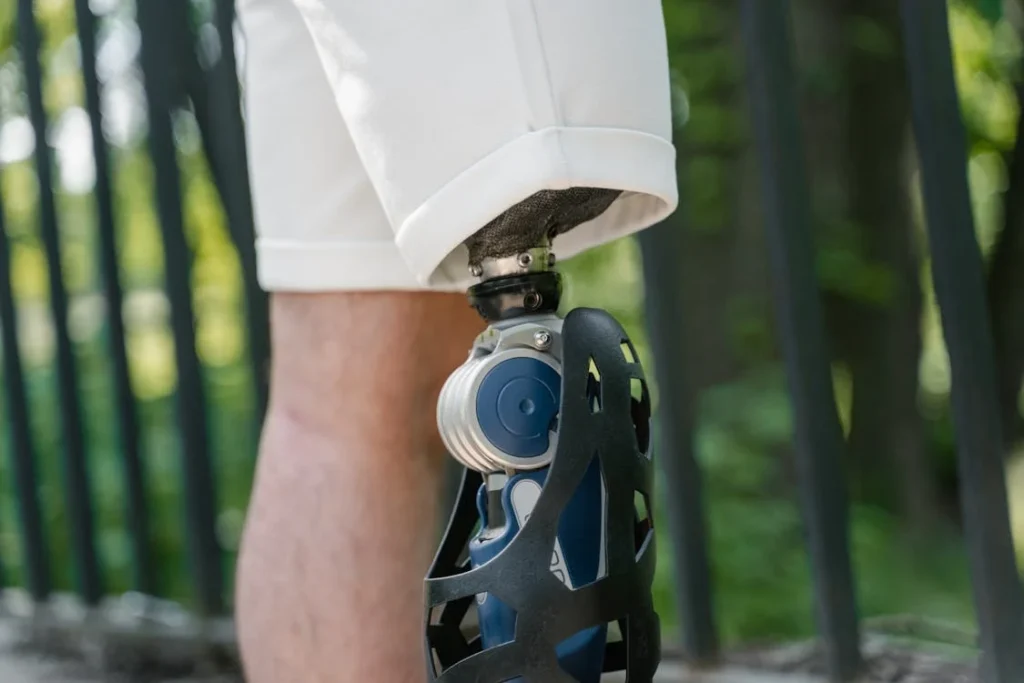
Advancements in Prosthetic Technology
Prosthetic technology has come a long way, making life easier for people with limb loss. Innovations in materials, design, and functionality have improved both partial foot and hemipelvectomy prosthetics, offering users greater comfort, mobility, and independence.
Lightweight and Durable Materials
Modern prosthetics use advanced materials like carbon fiber, titanium, and medical-grade silicone. These materials offer a perfect balance between strength and weight, allowing for prosthetics that are both durable and comfortable.
For partial foot prosthetics, lightweight materials help users walk with minimal strain. Silicone-based prosthetics mimic the look and feel of a natural foot while providing flexibility for smoother movement.
Carbon fiber options offer energy return, making walking more efficient.
For hemipelvectomy prosthetics, the use of lightweight materials reduces the overall energy required for walking. Older designs were often bulky and heavy, making movement difficult.
Today’s models are significantly lighter, enabling better mobility without added fatigue.
Customization for a Better Fit
Every prosthetic user has different needs, which is why customization is crucial. Advances in 3D scanning and printing allow prosthetists to create highly personalized prosthetics that match the exact shape and size of the residual limb.
For partial foot prosthetic users, this means better alignment, improved comfort, and a more natural walking motion. Some designs even include textured surfaces that replicate the feel of a natural foot inside a shoe.
For hemipelvectomy prosthetic users, custom sockets play a crucial role in comfort and functionality. A well-fitted socket ensures even weight distribution and reduces pressure points.
Suspension systems have also improved, with vacuum-assisted technology providing a secure yet comfortable fit.
Microprocessor-Controlled Joints
One of the biggest breakthroughs in prosthetic technology is the introduction of microprocessor-controlled joints. These are especially beneficial for hemipelvectomy prosthetics, where movement control is more complex.
Unlike traditional mechanical joints, microprocessor-controlled knees and hips adjust to walking speed and terrain in real-time. This makes movement more fluid and natural, reducing the risk of falls and improving overall mobility.
For users who engage in active lifestyles, these smart prosthetics can detect shifts in balance and adjust accordingly, offering a smoother walking experience. While these advanced prosthetics are more expensive, they provide unmatched functionality and ease of use.
Gamified Rehabilitation and Smart Prosthetics
Rehabilitation is a key part of adapting to a prosthetic, and modern technology has made this process more engaging. Gamified rehabilitation programs, like those offered by Robobionics, use interactive exercises to help users improve their movement in a fun and effective way.
Smart prosthetics, which connect to mobile apps, allow users to track their walking patterns and receive feedback on posture and movement. Some even offer real-time adjustments through AI-driven systems, ensuring optimal performance throughout the day.
The Future of Prosthetic Technology
As technology continues to advance, prosthetic solutions will become even more intuitive and user-friendly. Researchers are developing prosthetics with sensory feedback, allowing users to “feel” pressure and texture through artificial nerves.
This breakthrough could revolutionize how prosthetic users interact with their environment.
At Robobionics, we are committed to bringing these advancements to our users, ensuring that everyone has access to the best prosthetic solutions available. Whether it’s through lightweight materials, custom designs, or smart technology, our goal is to improve mobility and enhance quality of life.
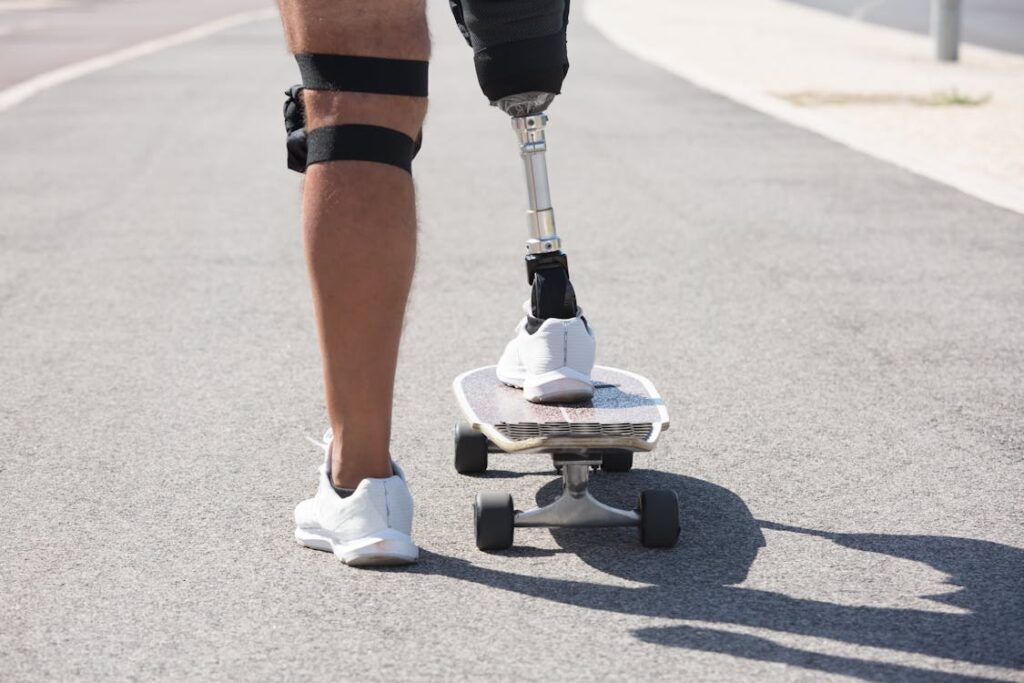
Long-Term Care and Maintenance of Prosthetics
Getting a prosthetic is just the beginning. To ensure that a partial foot or hemipelvectomy prosthesis lasts long and functions properly, regular care and maintenance are essential.
Proper upkeep not only extends the life of the prosthetic but also prevents discomfort and potential health issues.
Daily Cleaning and Hygiene
Keeping a prosthetic clean is crucial to avoid skin irritation and infections. Since prosthetics are worn for long hours, sweat and friction can create a breeding ground for bacteria.
For partial foot prosthetic users, cleaning the prosthetic daily with mild soap and warm water helps maintain hygiene. If the prosthetic includes a liner or insert, these should also be cleaned and dried properly before wearing.
Wearing moisture-wicking socks can help reduce sweating and keep the foot dry.
For hemipelvectomy prosthetic users, the socket and suspension system should be wiped down regularly. Any part that comes into direct contact with the skin should be cleaned with antibacterial wipes or mild soap to prevent irritation.
It’s also important to check for any signs of redness or pressure sores, as prolonged friction can lead to skin breakdown.
Checking for Wear and Tear
Over time, prosthetics undergo natural wear and tear. Regularly inspecting the device can help identify small issues before they turn into major problems.
For partial foot prosthetics, users should check for cracks, loose padding, or changes in fit. A worn-out prosthetic can affect balance and cause strain on other parts of the body. If any part of the prosthetic feels unstable, a prosthetist should be consulted for adjustments.
For hemipelvectomy prosthetics, paying attention to the knee joint, foot mechanism, and suspension system is important. If the prosthetic feels loose, unstable, or makes unusual noises, it may need servicing.
Some advanced prosthetics with microprocessor-controlled joints may also require occasional software updates to ensure optimal performance.
Managing Changes in Fit
The body changes over time, and these changes can affect how a prosthetic fits. Weight fluctuations, muscle development, or changes in activity level may require adjustments to the prosthetic.
For partial foot prosthetic users, even small changes in foot shape can affect comfort. Regular check-ups help ensure that the prosthetic continues to fit well and provide the necessary support.
For hemipelvectomy prosthetic users, socket fit is critical. If the socket becomes too tight or too loose, it can lead to discomfort and difficulty walking. Some suspension systems allow for minor fit adjustments, but significant changes may require a new socket or modifications by a prosthetist.
When to Seek Professional Help
Even with regular maintenance, there will be times when professional adjustments are needed. Users should schedule an appointment with their prosthetist if they experience:
- Increased discomfort or pain while wearing the prosthetic
- Skin irritation, blisters, or sores from prolonged use
- A feeling of instability or difficulty walking
- Visible damage or worn-out components
At Robobionics, we provide ongoing support to ensure that prosthetic users receive timely maintenance and repairs.
Our goal is to make prosthetic care as seamless as possible, so users can focus on living their lives without unnecessary discomfort or inconvenience.
Conclusion
Living with a partial foot or hemipelvectomy prosthesis is a journey that requires the right prosthetic, proper rehabilitation, and ongoing care. With advancements in technology, prosthetic solutions today offer greater comfort, mobility, and independence than ever before. Whether it’s a lightweight partial foot prosthesis or a highly advanced hemipelvectomy prosthetic, the right fit can make all the difference in everyday life.
Adapting to a prosthetic takes time, but with structured rehabilitation and the right support system, users can regain confidence and return to an active lifestyle. Regular maintenance ensures long-term comfort, while innovations like gamified rehabilitation and smart prosthetics continue to improve the user experience.
At Robobionics, we are dedicated to providing high-quality prosthetic solutions tailored to each individual’s needs. From precise fittings to long-term support, we ensure that every user receives the best possible care. If you or a loved one is exploring prosthetic options, contact us today to learn how we can help restore mobility and independence.



